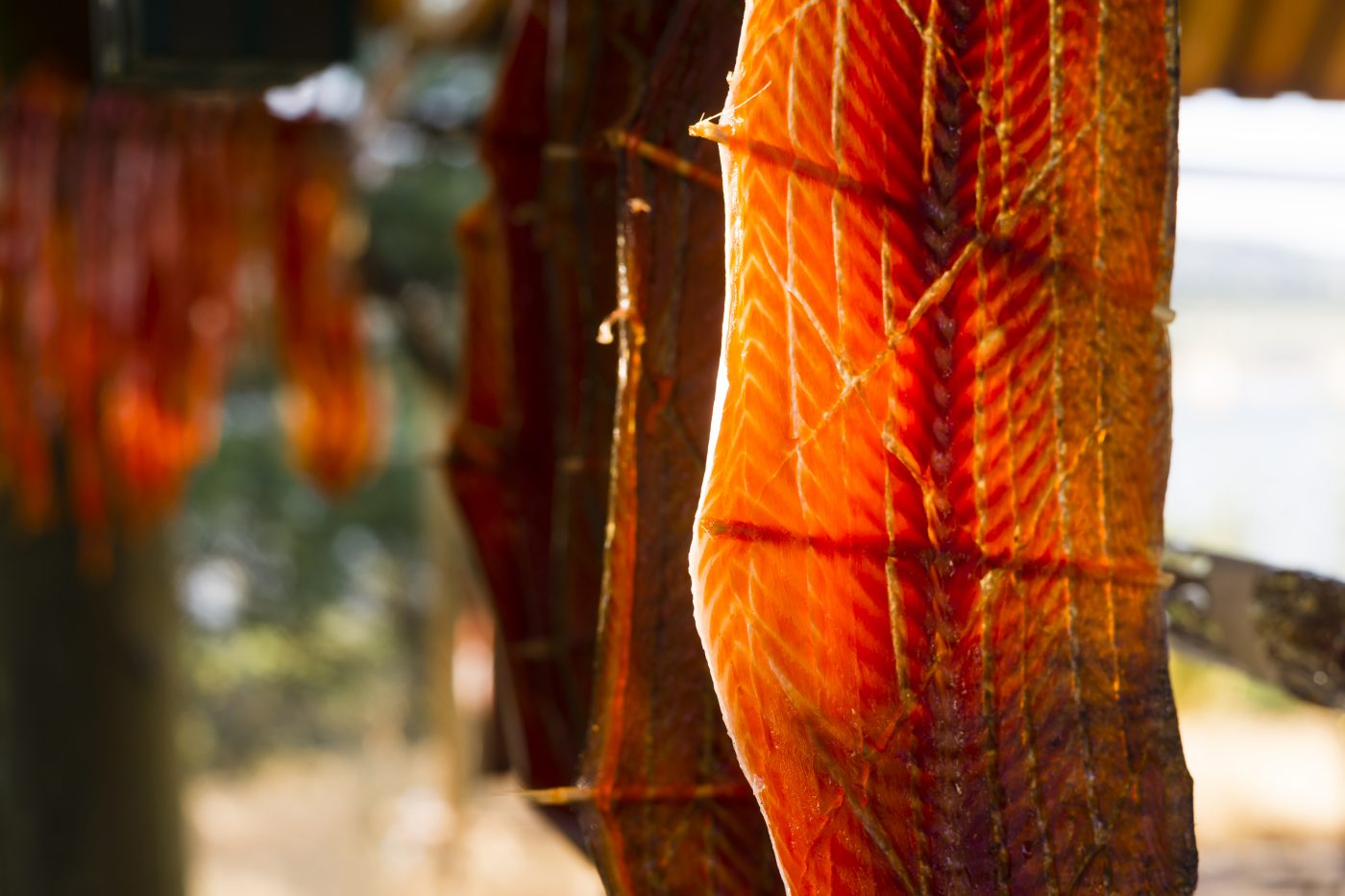
Indian tribes on the West Coast retain strong spiritual and cultural ties to salmon and other aquatic species based on thousands of years of use for tribal religious/cultural ceremonies, subsistence, and commerce. These species include salmon and steelhead, halibut, whiting, sturgeon, lamprey, and many other species.
“Usual and accustomed areas” and treaty rights
Along the West Coast, several tribes have treaties reserving their right to fish in “usual and accustomed” (U&A) fishing areas. Federal courts have determined that the treaty tribes are entitled to up to half of the harvestable surplus of fish stocks that reside in or pass through their U&A areas. Numerous stocks of fish that these tribes have rights to are also harvested in ocean fisheries in Alaska, Canada, and the Pacific Council area off the West Coast.
In the Columbia River Basin, the tribal sharing structure for salmon is detailed in the Columbia River Management Plan. In California, the Yurok and Hoopa Valley tribes have a Federally reserved right to harvest up to half of the harvestable surplus of Klamath River fish.
In western Washington, tribes with treaty-reserved fishing rights include the Lummi, Nooksack, Swinomish, Upper Skagit, Sauk-Suiattle, Stillaguamish, Tulalip, Muckleshoot, Puyallup, Nisqually, Squaxin Island, Skokomish, Suquamish, Port Gamble S’Klallam, Jamestown S’Klallam, Lower Elwha Klallam, Makah, Quileute, Quinault, and Hoh.
In the Columbia River Basin, tribes with treaty-reserved fishing rights include the Yakama, Warm Springs, Umatilla, and Nez Perce.
Tribal fish commissions
In the Pacific Northwest, tribes with treaty-reserved fishing rights created fish commissions to coordinate and assist member tribes in their role as natural resource co-managers. The Northwest Indian Fisheries Commission was created after the 1974 U.S. v. Washington ruling (Boldt Decision) that re-affirmed the western Washington tribes’ treaty-reserved fishing rights. Following the 1977 U.S. v. Oregon ruling, the Columbia River Inter-Tribal Fish Commission was also created. The Klamath River Intertribal Fish and Water Commission was created among four basin tribes in 1995, including the Hoopa Valley, Karuk, Klamath and Yurok tribes. In addition to fisheries management, the commissions support tribal initiatives related to habitat restoration and wildlife management.
Co-management role
The tribes are co-managers of fisheries with the states and Federal government. As such, the Pacific Council has a reserved tribal voting seat, which is filled by “an Indian tribe with federally recognized fishing rights from California, Oregon, Washington, or Idaho in accordance with Section 302(b)(5) of the Magnuson-Stevens Act.” The Pacific Council is the only one of the eight U.S. regional fishery management councils that includes designated tribal representation. The tribal member (currently Joe Oatman, Nez Perce) is a voting member of the Council.
There is also tribal representation on the following Council committees: Groundfish Endangered Species Workgroup (currently Makah); Groundfish Management Team (currently Makah); Habitat Committee (currently Hoopa); Salmon Advisory Subpanel (currently Yurok and Quinault); Salmon Technical Team (currently Northwest Indian Fisheries Commission); Coastal Pelagic Species Management Team (currently Quinault); Highly Migratory Species Management Team (currently Quinault); and Scientific and Statistical Committee (currently Muckleshoot and Northwest Indian Fisheries Commission).
Tribal Ocean Fisheries
The Makah, Quileute, Hoh, and Quinault tribes may exercise their treaty rights to harvest salmon in their respective U&A fishing areas in Washington Marine Areas 2, 3 and 4 (roughly, waters off Westport, La Push, and Neah Bay). In addition, Makah, Lower Elwha Klallam, Jamestown S’Klallam, and Port Gamble S’Klallam tribes may exercise their treaty rights to harvest salmon in their respective U&A fishing areas in Washington Marine Area 4B, the entrance to the Strait of Juan de Fuca.
The tribal ocean fishery consists of a Chinook-only season in May and June, followed by a Chinook and coho season from July through September. From May through September, tribal salmon harvest in Area 4B counts toward treaty troll ocean quotas.
The Makah, Quileute, Hoh, and Quinault tribes also may exercise their treaty rights to harvest other marine species in their respective U&A fishing areas along the Washington coast. Formal tribal allocations exist for sablefish, Pacific halibut, and Pacific whiting. Set-asides for other groundfish species are requested by the tribes and set by Council action during the biennial harvest specification process. The Quinault Indian Nation is sometimes informally allocated coastal pelagic species.
The Halibut Catch Sharing Plan includes tribal allocations. The tribes are an important part of the International Pacific Halibut Commission process of assessing the stock and allocating catch coastwide.
The “North of Falcon” Process
Each year tribal, state and Federal fishery managers gather to plan the in-river and ocean, recreational and commercial salmon fisheries in the region north of Cape Falcon, Oregon. This series of government-to-government meetings in March and April is known as the North of Falcon process. The purpose is to ensure salmon conservation objectives, tribal sharing obligations, and international treaty agreements are met.
Learn more
To learn about the individual tribes, please see their websites at the links below (generally from north to south):
- Northwest Indian Fisheries Commission
- Columbia River Inter-Tribal Fish Commission
- Makah Tribe
- Quileute Nation
- Hoh Tribe
- Quinault Indian Nation
- Nez Perce Tribe
- Yakama Nation
- Confederated Tribes of the Umatilla Indian Reservation
- Confederated Tribes of the Warm Springs Reservation of Oregon
- Yurok Tribe
- Hoopa Valley Tribe
Locations of tribal nations that are active in Federal fisheries management
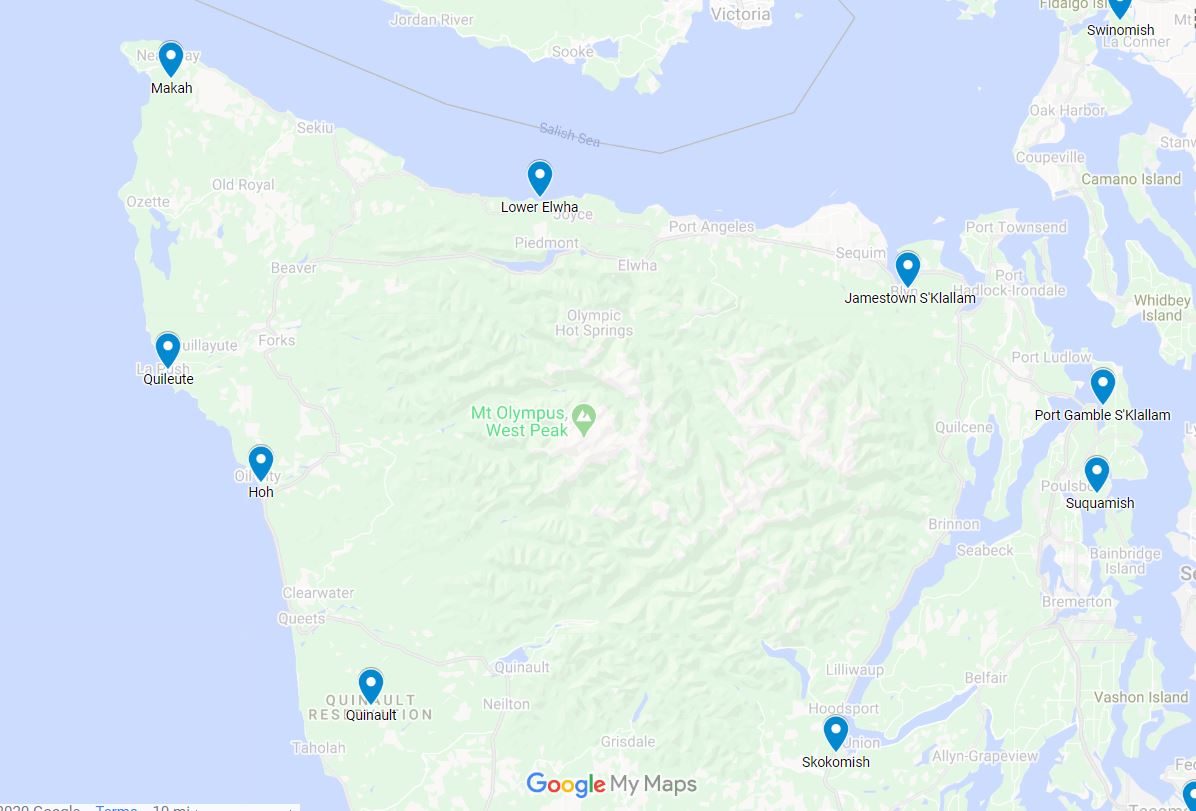
Olympic Peninsula and north Puget Sound tribes
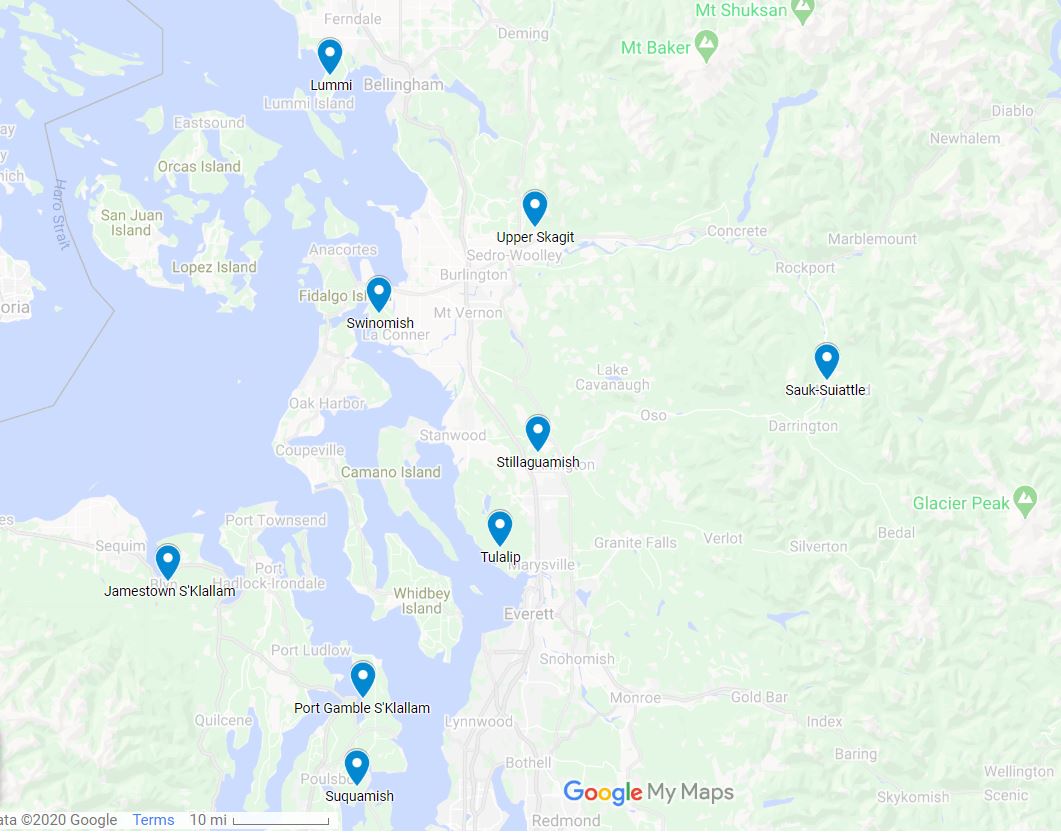
Central Puget Sound tribes
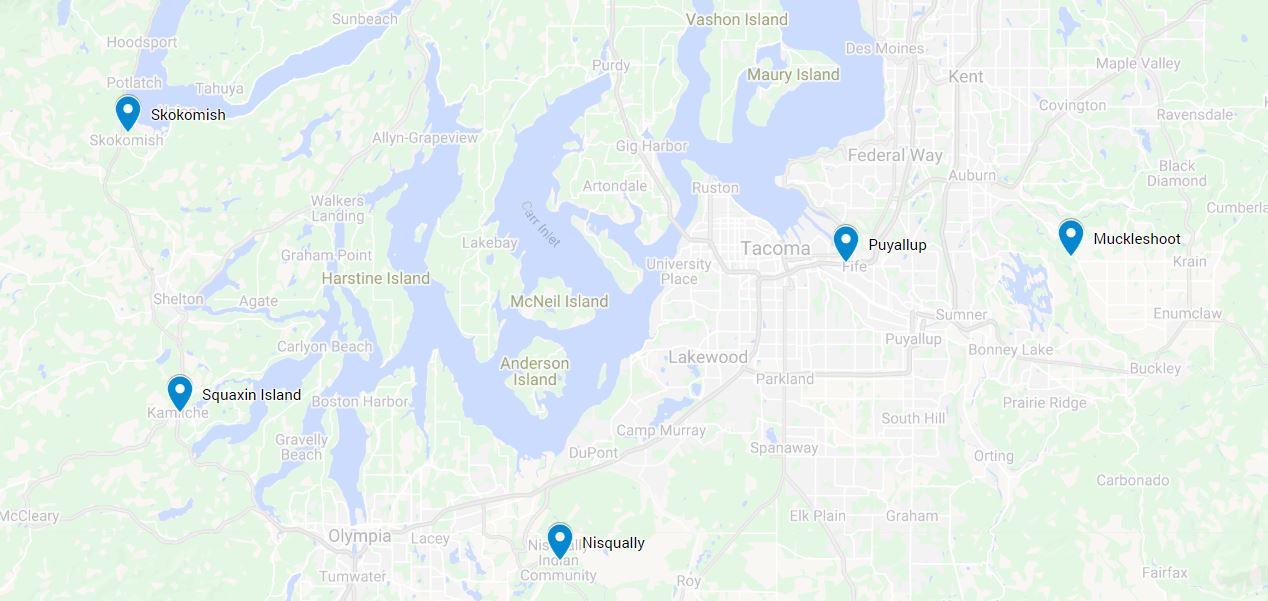
South Puget Sound tribes
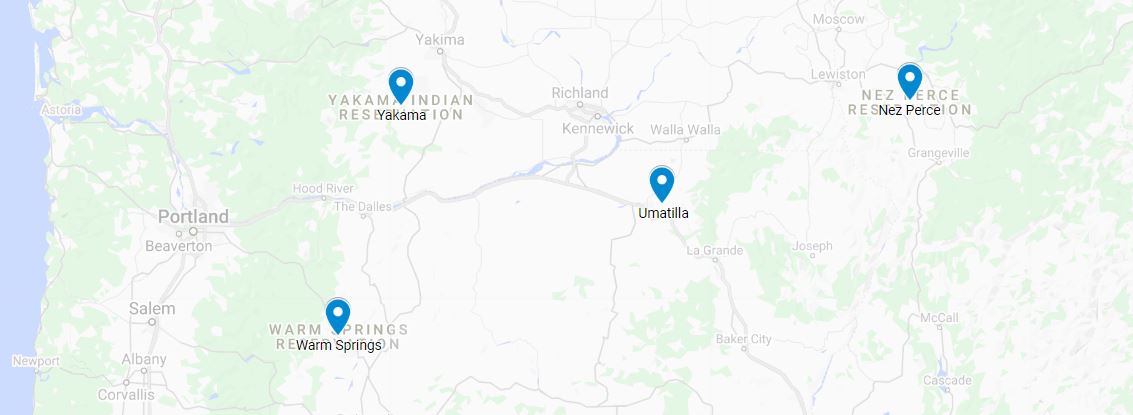
Inland tribes (Oregon/Washington/Idaho)
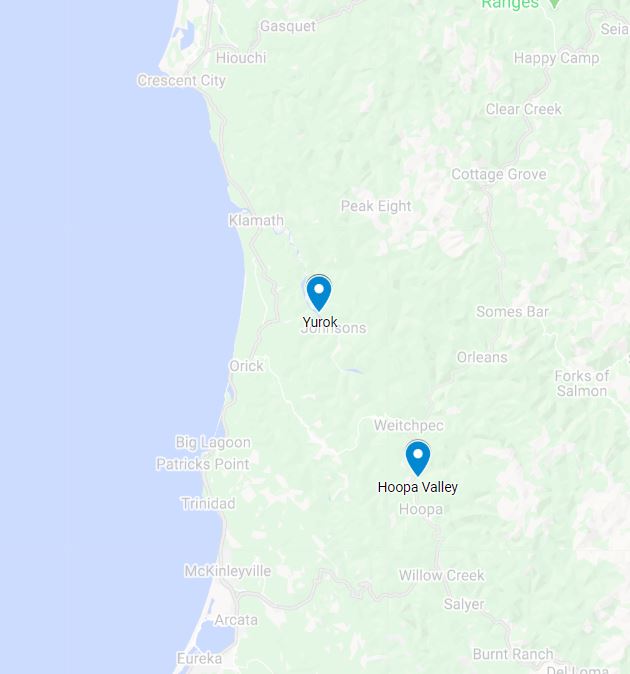
California tribes
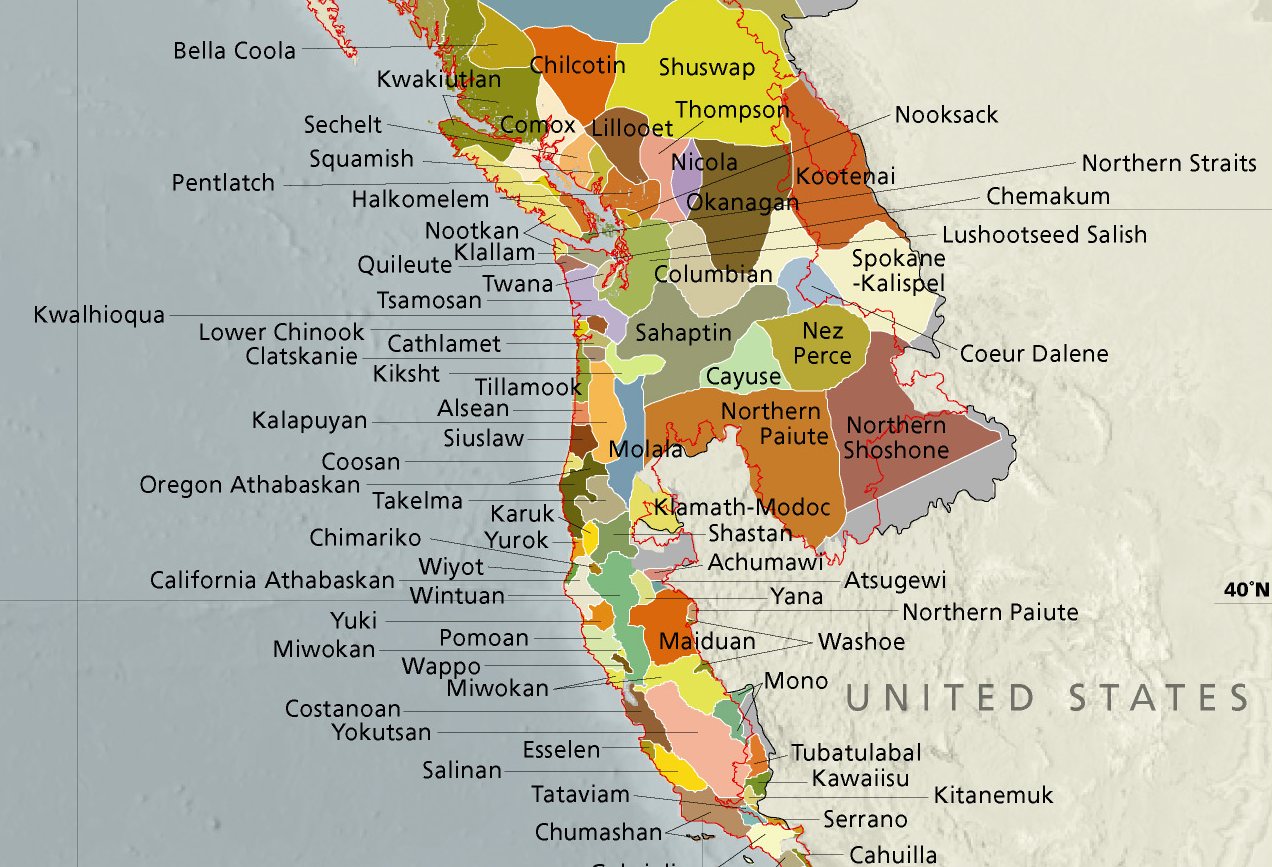
Contact: University of California Press